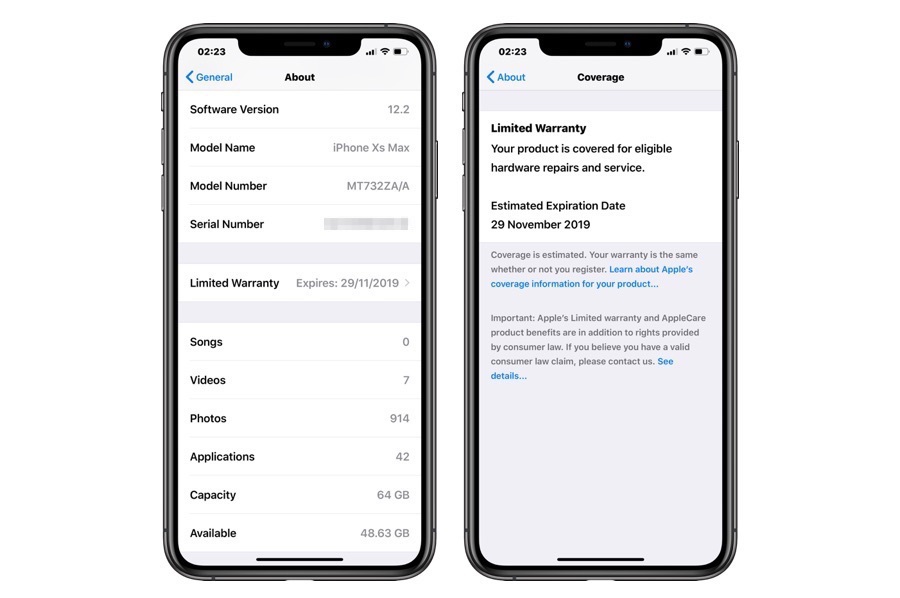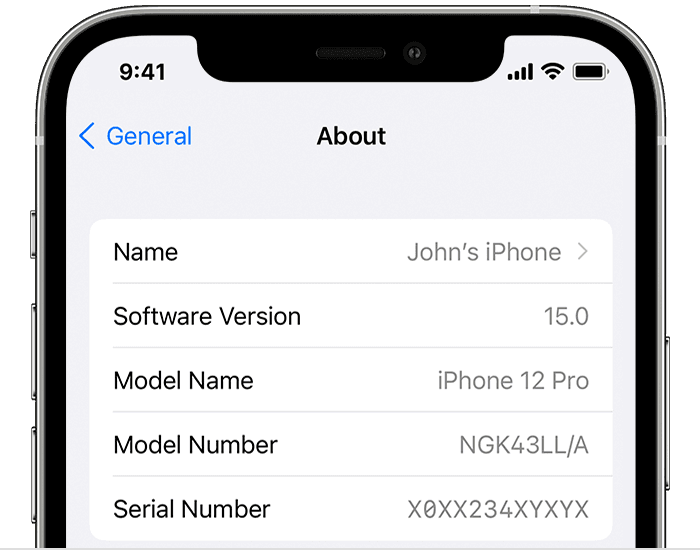Check iPhone inventory sets the stage for this enthralling narrative, offering readers a glimpse into a world where technology meets supply and demand. The quest to secure the latest iPhone model can be a thrilling adventure, filled with anticipation and a touch of uncertainty. Understanding how iPhone inventory is managed is crucial for navigating this dynamic landscape, whether you’re a tech enthusiast eager to be among the first to own the newest release or a retailer striving to meet customer expectations.
From the intricacies of Apple’s official website to the strategies employed by authorized resellers, this exploration delves into the methods for checking iPhone inventory. It unveils the factors that influence availability, such as seasonality, demand, and global events, and provides insights into the art of managing inventory to ensure a seamless experience for both consumers and businesses.
Understanding iPhone Inventory Management

Effective iPhone inventory management is crucial for any business dealing with Apple products. Accurate tracking and management of iPhone inventory are essential for maximizing profits, minimizing losses, and ensuring customer satisfaction.
Types of iPhone Inventory
iPhone inventory can be categorized into three main types: new, refurbished, and pre-owned.
- New iPhones are directly sourced from Apple and are typically sold at full retail price. They come with the manufacturer’s warranty and are considered the highest quality.
- Refurbished iPhones are previously owned iPhones that have been inspected, repaired, and certified to meet Apple’s standards. They often come with a shorter warranty period than new iPhones and are typically sold at a discounted price.
- Pre-owned iPhones are iPhones that have been previously owned and are sold without any official certification or warranty. They are usually the cheapest option but may have cosmetic damage or functional issues.
Challenges of Managing iPhone Inventory
Managing iPhone inventory presents various challenges, including:
- Rapid Product Cycles: Apple releases new iPhone models frequently, leading to rapid product obsolescence and the need to manage a diverse range of inventory.
- Demand Fluctuations: iPhone demand can fluctuate significantly based on new model releases, promotions, and seasonal factors. Managing inventory levels to meet these fluctuations can be challenging.
- Inventory Valuation: Determining the accurate value of iPhone inventory, especially for refurbished and pre-owned models, can be complex due to varying conditions and market prices.
- Security and Theft: iPhones are high-value items, making them susceptible to theft. Implementing robust security measures to protect inventory is crucial.
- Inventory Tracking and Management: Tracking and managing a large volume of iPhones, especially across multiple locations, requires efficient inventory management systems and processes.
Methods for Checking iPhone Inventory

Checking iPhone inventory is crucial for businesses and individuals alike, whether you’re a retailer looking to restock, a consumer seeking a specific model, or an investor tracking sales trends. Understanding the various methods available allows you to access accurate and timely information to make informed decisions.
Checking iPhone Inventory Through Apple’s Official Website
Apple’s official website provides a convenient way to check iPhone inventory. It offers real-time updates on product availability, allowing you to see which models and storage capacities are currently in stock. This method is particularly useful for consumers looking to purchase an iPhone directly from Apple.
- Visit the Apple website and navigate to the iPhone section.
- Select the specific iPhone model you are interested in.
- Choose the desired storage capacity and color.
- The website will display the availability status, indicating whether the iPhone is in stock, out of stock, or available for pre-order.
Checking iPhone Inventory Through Authorized Apple Resellers
Authorized Apple resellers, such as Best Buy, Target, and Walmart, also offer iPhone inventory information. Checking inventory through these retailers can be beneficial if you prefer to purchase your iPhone from a physical store or want to compare prices.
- Visit the website of your preferred authorized Apple reseller.
- Search for the specific iPhone model you are looking for.
- Filter the results by location, storage capacity, and color to narrow down your search.
- The website will display the availability status of the iPhone at the selected location.
Using Third-Party Inventory Tracking Tools
Third-party inventory tracking tools offer comprehensive insights into iPhone inventory across various retailers, both online and offline. These tools aggregate data from multiple sources, providing a centralized view of iPhone availability.
- Benefits of Using Third-Party Inventory Tracking Tools:
- Real-time updates on iPhone availability across multiple retailers.
- Price comparisons to find the best deals.
- Notifications when desired iPhone models become available.
- Historical inventory data for trend analysis.
- Popular Third-Party Inventory Tracking Tools:
- NowInStock
- The Inventory Tracker
- Stock Informer
Strategies for Managing iPhone Inventory

Effective inventory management is crucial for any business selling iPhones, ensuring optimal stock levels to meet customer demand while minimizing storage costs and preventing stockouts. This section will explore strategies for managing iPhone inventory, focusing on demand forecasting, stock level management, and the importance of real-time updates.
Optimizing iPhone Inventory Based on Demand Forecasting
Accurate demand forecasting is essential for optimizing iPhone inventory. This involves predicting future customer demand based on historical data, market trends, and other relevant factors. By analyzing past sales data, seasonal patterns, and upcoming product launches, businesses can develop a more accurate forecast.
- Historical Data Analysis: Analyzing past sales data, including sales volume, trends, and seasonality, provides insights into historical demand patterns.
- Market Trend Analysis: Staying informed about industry trends, new product releases, and competitor activities helps anticipate future demand shifts.
- Economic Indicators: Monitoring economic indicators such as GDP growth, consumer confidence, and unemployment rates can provide insights into potential changes in consumer spending patterns.
- Promotional Campaigns: Planning and tracking promotional campaigns can help forecast demand spikes during specific periods.
By combining these methods, businesses can generate a more comprehensive demand forecast, enabling them to adjust inventory levels proactively.
Best Practices for Managing Stock Levels
Effective stock level management is critical for ensuring product availability while minimizing inventory holding costs and avoiding stockouts. Balancing these factors requires careful consideration of various factors.
- Lead Time: Understanding the time it takes to receive new inventory is essential for determining reorder points and preventing stockouts.
- Safety Stock: Maintaining a safety stock buffer helps mitigate uncertainties in demand and lead time, ensuring product availability during unexpected fluctuations.
- Inventory Turnover Rate: Measuring how quickly inventory is sold and replenished provides insights into stock efficiency and helps identify potential overstocking or slow-moving items.
- ABC Analysis: Classifying inventory items based on their value and importance helps prioritize stock management efforts, focusing on high-value items that require tighter control.
By implementing these best practices, businesses can maintain optimal stock levels, minimizing holding costs and maximizing customer satisfaction.
Importance of Real-Time Inventory Updates and Communication
Real-time inventory updates are crucial for accurate stock visibility and efficient order fulfillment. This involves maintaining a centralized system that tracks inventory levels in real-time, enabling businesses to provide accurate information to customers and prevent stockouts.
- Accurate Stock Availability: Real-time updates ensure customers receive accurate information about product availability, minimizing disappointment and enhancing customer experience.
- Efficient Order Fulfillment: Real-time inventory visibility enables businesses to process orders quickly and accurately, minimizing delays and ensuring timely delivery.
- Reduced Stockouts: Real-time tracking helps prevent stockouts by providing early warning signals when inventory levels are low, allowing for timely replenishment.
- Improved Communication: Real-time inventory updates facilitate effective communication with customers, keeping them informed about order status and potential delays.
By investing in real-time inventory management systems and prioritizing transparent communication, businesses can build trust with customers and optimize their operations.
Checking my iPhone inventory, I find myself drawn to the faded edges of my old case. A reminder of countless moments, fleeting and forgotten. Perhaps I’ll replace it with something new, something that reflects the quiet sorrow I carry. Maybe a geto suguru wallpaper iphone would suit, a stark contrast to the vibrant hues of the past.
A constant reminder, a silent echo of what once was. But for now, I’ll keep the old case, a testament to the passage of time, a fragile echo of memories past.
Tools and Resources for iPhone Inventory Management

Efficiently managing iPhone inventory requires the right tools and resources. These tools can streamline operations, reduce errors, and provide valuable insights into inventory levels, demand patterns, and supply chain performance.
Inventory Management Software
Inventory management software solutions are essential for businesses dealing with large volumes of iPhones. These software programs automate various inventory tasks, including tracking, forecasting, and order management.
| Software | Features |
|---|---|
| Zoho Inventory | Inventory tracking, purchase order management, sales order management, barcode scanning, reporting and analytics, integrations with other business tools |
| NetSuite | Inventory management, order fulfillment, warehouse management, supply chain management, financial management, customer relationship management |
| Brightpearl | Inventory management, order fulfillment, warehouse management, customer relationship management, marketing automation, financial management |
| Fishbowl Inventory | Inventory tracking, purchase order management, sales order management, barcode scanning, reporting and analytics, manufacturing management |
Barcode Scanners
Barcode scanners are vital for accurate and efficient iPhone inventory tracking. They enable businesses to quickly scan barcodes on iPhones, capturing data like serial numbers, model numbers, and storage capacity.
- Handheld Barcode Scanners: These portable devices are easy to use and can be integrated with inventory management software.
- Desktop Barcode Scanners: These scanners are ideal for stationary applications, such as receiving docks or warehouse workstations.
- Wireless Barcode Scanners: These scanners offer flexibility and mobility, allowing users to scan barcodes from various locations.
Online Resources, Check iphone inventory
Several online resources provide valuable information and insights into iPhone inventory management.
- Apple Developer Website: The official Apple Developer website offers resources on managing Apple devices, including iPhones, for businesses.
- Inventory Management Blogs and Articles: Numerous blogs and articles provide best practices, tips, and industry trends for iPhone inventory management.
- Industry Forums and Communities: Online forums and communities dedicated to iPhone inventory management allow businesses to connect with peers and share experiences.
Commonly Asked Questions: Check Iphone Inventory
How often is iPhone inventory updated?
iPhone inventory updates can vary depending on the retailer and the specific model. It’s generally recommended to check for updates frequently, especially during peak seasons or new product launches.
What are the common reasons for iPhone inventory shortages?
iPhone inventory shortages can be caused by a variety of factors, including high demand, supply chain disruptions, manufacturing delays, and global events.
Are there any tips for finding iPhone inventory in stock?
Consider checking multiple retailers, signing up for email notifications, and utilizing third-party inventory tracking tools. Being proactive and flexible can increase your chances of finding the iPhone you’re looking for.
